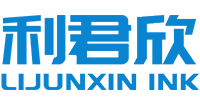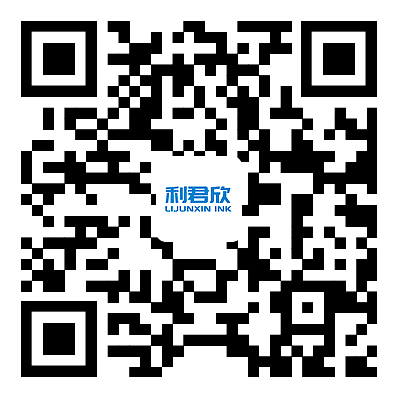
- English
- 简体中文
- שפה עברית
- lugha ya Kiswahili
- ગુજરાતી
- Hausa
- ಕನ್ನಡ
- Punjabi
- پښتو
- سنڌي
- Sundanese
- Yoruba
- Español
- Português
- русский
- Français
- 日本語
- Deutsch
- tiếng Việt
- Italiano
- Nederlands
- ภาษาไทย
- Polski
- 한국어
- Svenska
- magyar
- Malay
- বাংলা ভাষার
- Dansk
- Suomi
- हिन्दी
- Pilipino
- Türkçe
- Gaeilge
- العربية
- Indonesia
- Norsk
- تمل
- český
- ελληνικά
- український
- Javanese
- தமிழ்
- తెలుగు
- Eesti Keel
- Română
- मराठी
- فارسی
- नेपाली
- Burmese
यूव्हीएलईडी स्क्रीन प्रिंटिंग शाई आणि यूव्ही क्यूर्ड इंक्समध्ये काय फरक आहे?
2024-10-09

UV LED स्क्रीन प्रिंटिंग शाई पारंपारिक शाईंपेक्षा वेगळी कशामुळे होते?
UV LED स्क्रीन प्रिंटिंग शाई पारंपारिक शाईंपेक्षा अनेक प्रकारे भिन्न आहेत:
- UV LED शाई अधिक जलद कोरडी होते आणि अधिक जलद बरे होते, जलद उत्पादन वेळेस अनुमती देते.
- UV LED inks are more durable than traditional inks, making them ideal for use in applications where the substrate will be exposed to harsh conditions.
- UV LED शाईमध्ये वाष्पशील सेंद्रिय संयुगे (VOCs) नसतात, ज्यामुळे ते वापरण्यास सुरक्षित आणि पर्यावरणासाठी चांगले बनतात.
पारंपारिक शाईंपेक्षा UV LED स्क्रीन प्रिंटिंग शाई अधिक महाग आहेत का?
पारंपारिक शाईंपेक्षा UV LED स्क्रीन प्रिंटिंग शाई अधिक महाग असू शकतात, परंतु दीर्घकाळात त्या अधिक किफायतशीर असतात. याचे कारण असे की त्यांना बरे होण्यासाठी आणि कोरडे होण्यासाठी कमी ऊर्जा लागते, ज्यामुळे कालांतराने खर्चात लक्षणीय बचत होऊ शकते.
UV LED स्क्रीन प्रिंटिंग शाई वापरण्याचे फायदे काय आहेत?
UV LED स्क्रीन प्रिंटिंग शाई वापरण्याचे अनेक फायदे आहेत:
- जलद कोरडे आणि उपचार वेळा
- सब्सट्रेट्सच्या विस्तृत श्रेणीसाठी उत्कृष्ट आसंजन
- वाढलेली टिकाऊपणा आणि स्क्रॅच प्रतिरोध
- पर्यावरणास अनुकूल फॉर्म्युलेशन
- कमी वास
- उच्च तकाकी समाप्त
UV LED स्क्रीन प्रिंटिंग शाईचे काही ऍप्लिकेशन काय आहेत?
UV LED स्क्रीन प्रिंटिंग शाईचा वापर विस्तृत ऍप्लिकेशन्समध्ये केला जातो, यासह:
- इलेक्ट्रॉनिक उपकरणे
- कापड
- पॅकेजिंग साहित्य
- सिरॅमिक्स
- काचेची भांडी
- धातू उत्पादने
- प्लास्टिकचे भाग
शेवटी,UVLED स्क्रीन प्रिंटिंग इंक्स are an innovative and environmentally friendly type of ink that has many advantages over traditional inks. They are durable, fast-drying, and cost-effective in the long run, making them ideal for a wide range of applications.
Jiangxi Lijunxin Technology Co., Ltd. is a leading manufacturer and supplier of UV LED screen printing inks. Our products are of the highest quality and are designed to meet the needs of our customers. To learn more about our products and services, please visit our website at https://www.lijunxinink.comकिंवा येथे आमच्याशी संपर्क साधा13809298106@163.com.
10 वैज्ञानिक पेपर संदर्भ
1. डेव्हिस, ए.आर., इत्यादी. (2014). "पारंपारिक आणि यूव्ही एलईडी-क्युरची तुलना." जर्नल ऑफ अप्लाइड पॉलिमर सायन्स 131(7).
2. Dogan, H., and Akca, G. (2013). "UV LED curing of screen printing inks on plastic films." Journal of Coatings Technology and Research 10(3): 281-288.
3. डिसोझा, एच. एम., इत्यादी. (2012). "UV LED क्युरिंगमध्ये अलीकडील प्रगती." सेंद्रिय कोटिंग्ज 74(2): 331-338 मध्ये प्रगती.
4. Kao, Y. P., and Hai, H. T. (2013). "Development of UV LED curable inkjet inks." Journal of Imaging Science and Technology 57(1): 010501-010508.
5. Kim, E. J., et al. (2013). "UV LED cured hybrid sol-gel coatings: Effect of light intensity on film formation and properties." Materials Letters 108: 98-100.
6. Lee, Y. H., et al. (2011). "Material properties of UV LED-cured inks on flexible polymer substrates." Journal of Materials Science: Materials in Electronics 22(1): 86-91.
7. Park, J. H., et al. (2015). "Characterization of UV LED-cured ink-jet printed transparent conductors using silver nanowires." Applied Surface Science 323: 17-23.
8. Razzak, S. A., et al. (2015). "Material properties of UV LED cured vegetable oil-based inks." Journal of Coatings Technology and Research 12(6): 1017-1023.
9. Sun, H., et al. (2016). "Development and characterization of UV LED curable inkjet ink formulations." Journal of Imaging Science and Technology 60(1): 010502-010507.
10. Yeo, J., and Shin, S. (2014). "UV LED curing of photoinitiator-free cationic inks for fabrication of electronic devices." Journal of Materials Science: Materials in Electronics 25(2): 722-727.



